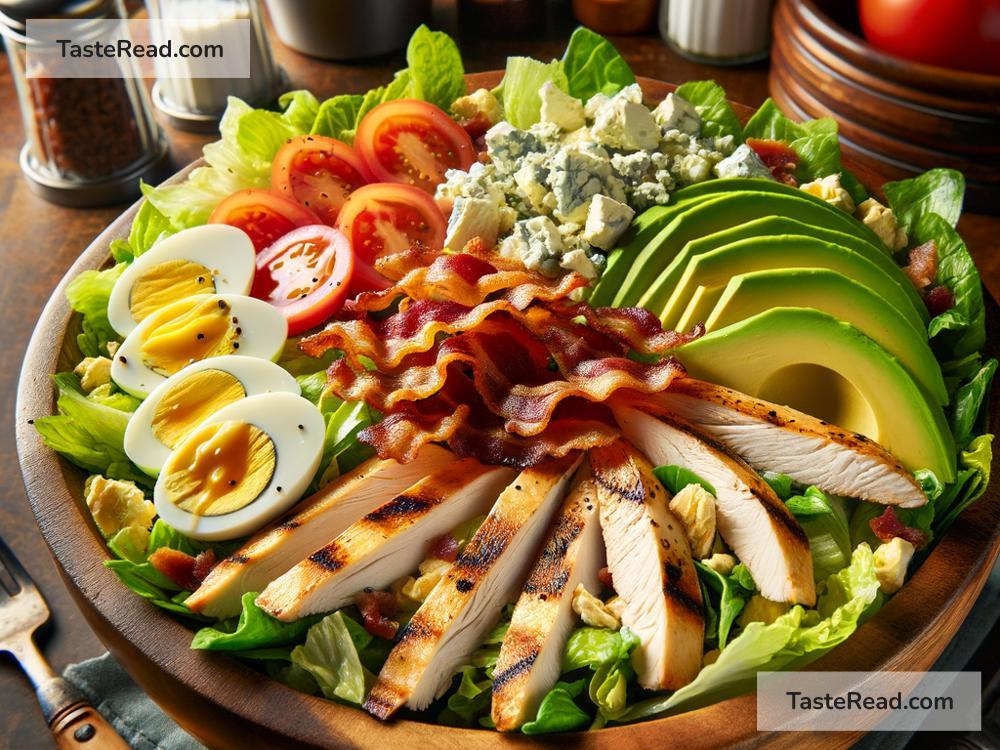The Evolution of the American Cobb Salad
The Cobb salad is one of the most popular and iconic dishes in American cuisine. It’s hard to imagine a restaurant menu without this colorful mix of lettuce, chicken, bacon, eggs, avocado, tomatoes, and blue cheese. But have you ever wondered where this beloved salad came from or how it became such a classic? In this blog post, we’ll explore the history and evolution of the Cobb salad, from its creation to its modern-day popularity.
Where It All Began: The Birth of the Cobb Salad
The Cobb salad was invented in Hollywood, California, in the late 1930s. According to the most widely accepted story, it was created at the Brown Derby restaurant, a famous hotspot for celebrities and diners at the time. The salad is named after Robert Howard Cobb, the owner of the restaurant.
Legend has it that Robert Cobb crafted the salad late one night when he was looking for a quick bite to eat. He raided the kitchen and threw together ingredients that were leftover from the day. His creation included lettuce, hard-boiled eggs, crispy bacon, roasted chicken, avocado, tomatoes, and blue cheese—and it was topped with a tangy vinaigrette dressing.
Soon after, the Cobb salad appeared on the Brown Derby’s menu. It became an instant hit with diners, especially Hollywood stars who frequented the restaurant. Before long, the salad gained a reputation beyond California and was recognized as a uniquely American dish.
Why Was It So Special?
What made the Cobb salad stand out was its perfect balance of flavors and textures. Each bite was a combination of cool and crisp greens, creamy avocado, salty bacon, savory chicken, tangy tomatoes, and sharp blue cheese. The dressing tied everything together, making every forkful delicious and satisfying.
The Cobb salad also had a sense of luxury. It wasn’t just your average green salad—it was hearty and packed with premium ingredients like bacon and blue cheese, which weren’t commonly used in salads at the time. It felt fancy but still approachable, which made it appealing to a wide range of people.
From Hollywood to Homes Across America
The Cobb salad didn’t stay tucked away in Hollywood for long. As the Brown Derby’s fame spread, so did its signature dish. By the 1940s and 1950s, recipes for Cobb salad began appearing in cookbooks and newspapers all over the country. Restaurants in cities far from California started adding their own versions to their menus.
The salad also became a popular choice for home cooks. It was easy to prepare, making it perfect for weekday dinners or entertaining guests. Families loved its versatility—if you didn’t have blue cheese or avocado, you could substitute cheddar cheese or cucumbers and still create a delicious Cobb-inspired dish.
The Cobb Salad in the Modern Era
Over time, the Cobb salad became a staple in American restaurants, from diners to upscale eateries. While the original Brown Derby closed in 1987, the salad has lived on and evolved in creative ways. Some chefs stick to the classic recipe, while others put their own twist on it.
Today, the Cobb salad comes in many different variations. For example, some people swap out chicken for shrimp or salmon, while others use feta or goat cheese instead of blue cheese. Vegetarian versions skip the meat and bacon entirely, replacing them with roasted vegetables, nuts, or tofu. Even the dressing has seen changes, with ranch or creamy avocado dressing sometimes taking the place of the traditional vinaigrette.
The salad has become so flexible that it’s now a blank canvas for chefs and home cooks alike. But no matter how it’s customized, a Cobb salad still delivers the same satisfaction and hearty feel that made it a hit in the first place.
The Cultural Impact of the Cobb Salad
The Cobb salad is more than just a meal—it’s part of American food culture. It represents the creativity and practicality of American cooking, where simple ingredients can come together to make something extraordinary. It also showcases how food trends can start small but grow into nationwide favorites.
In a way, the Cobb salad reflects the American spirit. It’s a dish that’s easy to adapt but still remains true to its roots. Its story reminds us that some of the best ideas come from experimenting and trying new things.
Conclusion
The Cobb salad has come a long way since its accidental invention at the Brown Derby restaurant in the 1930s. Over the decades, it’s gone from Hollywood’s favorite late-night snack to one of America’s most cherished salads. Its charm lies in its simplicity, flexibility, and bold flavors, which have kept it relevant for generations.
Whether you’re enjoying it at a local restaurant or making your own version at home, the Cobb salad proves that great food doesn’t always require fancy techniques—it just needs the right mix of fresh ingredients and a little creativity. Next time you dig into a Cobb salad, take a moment to appreciate its rich history and the journey it’s taken to become an American classic!


